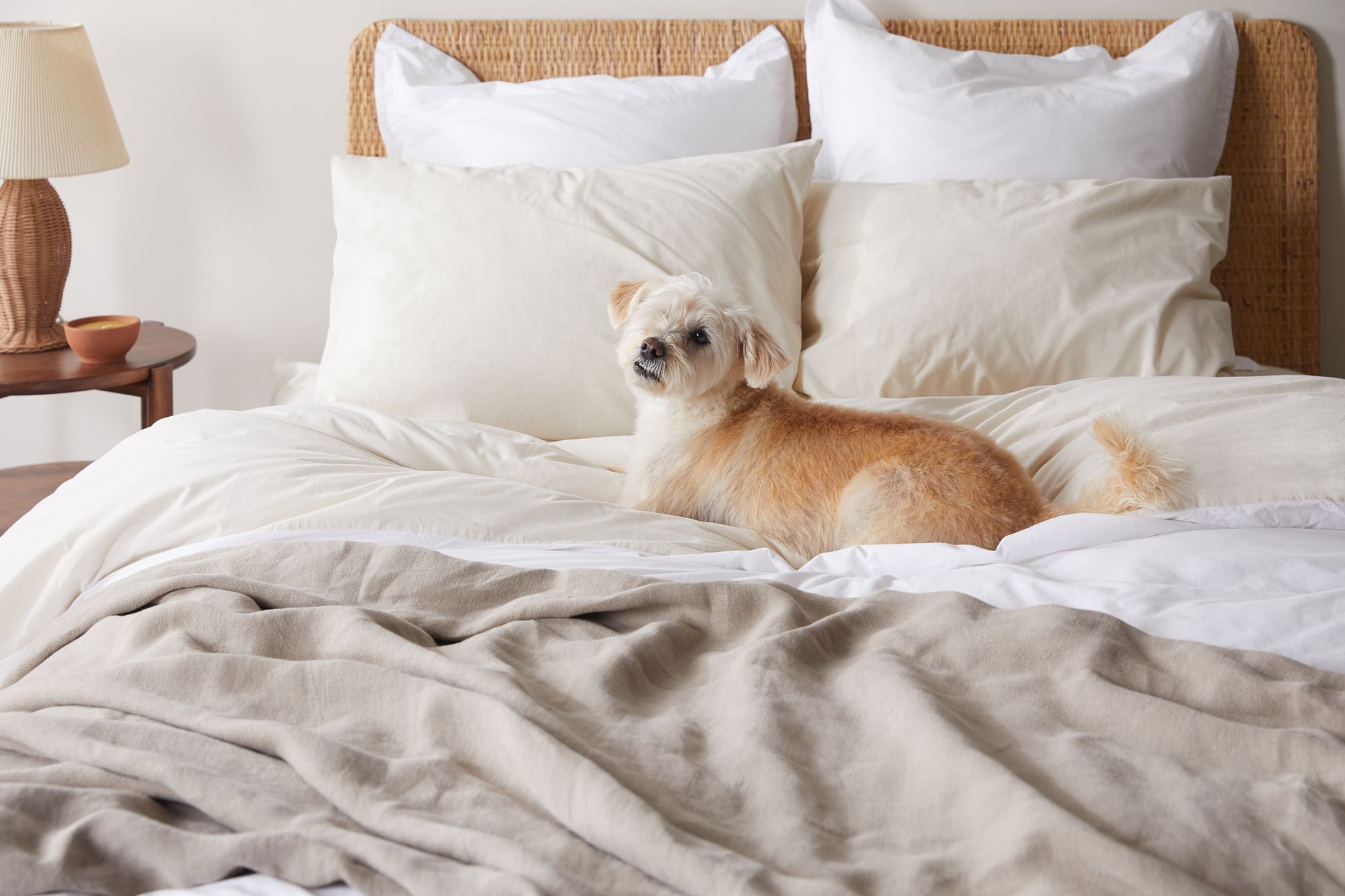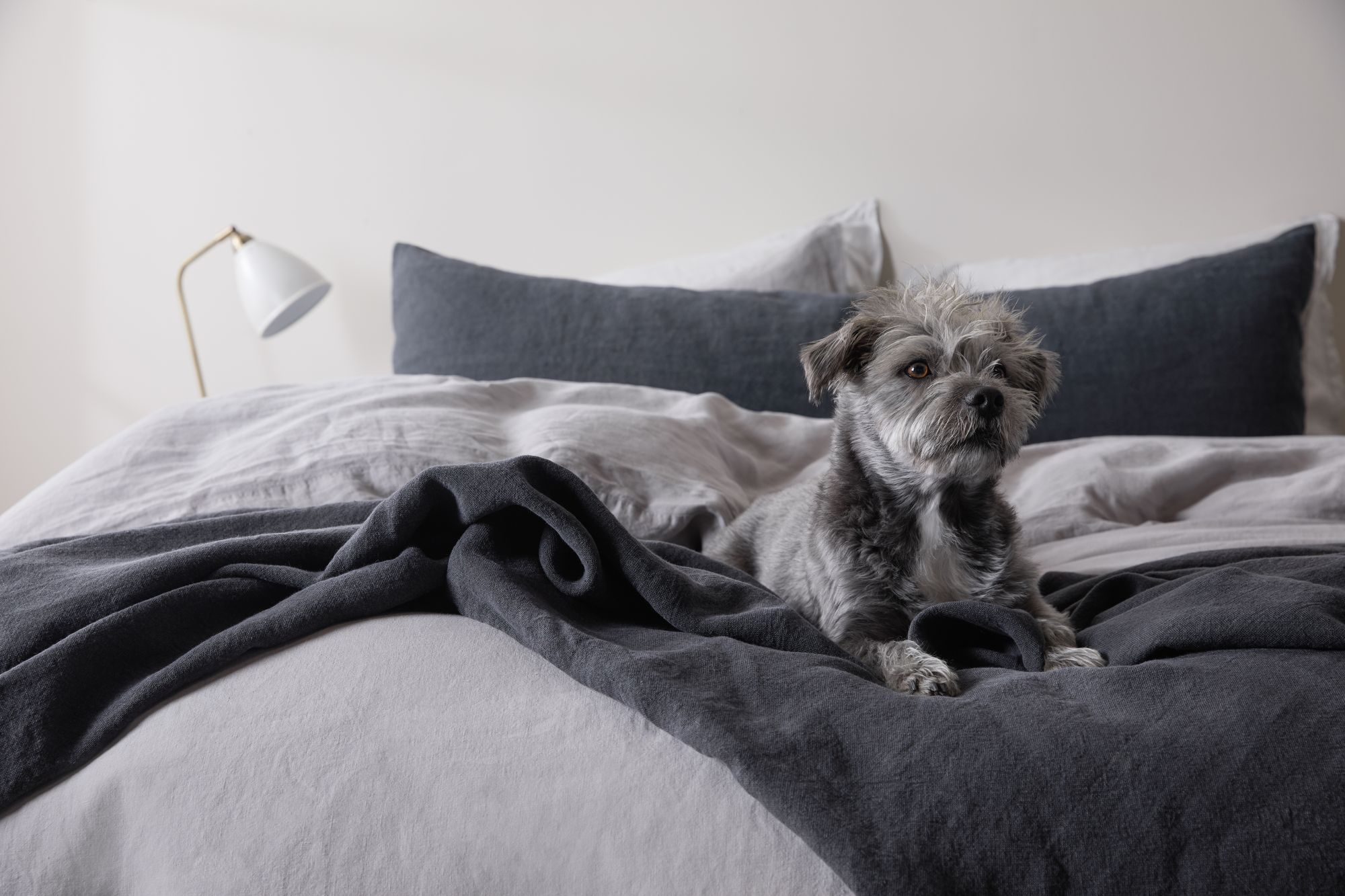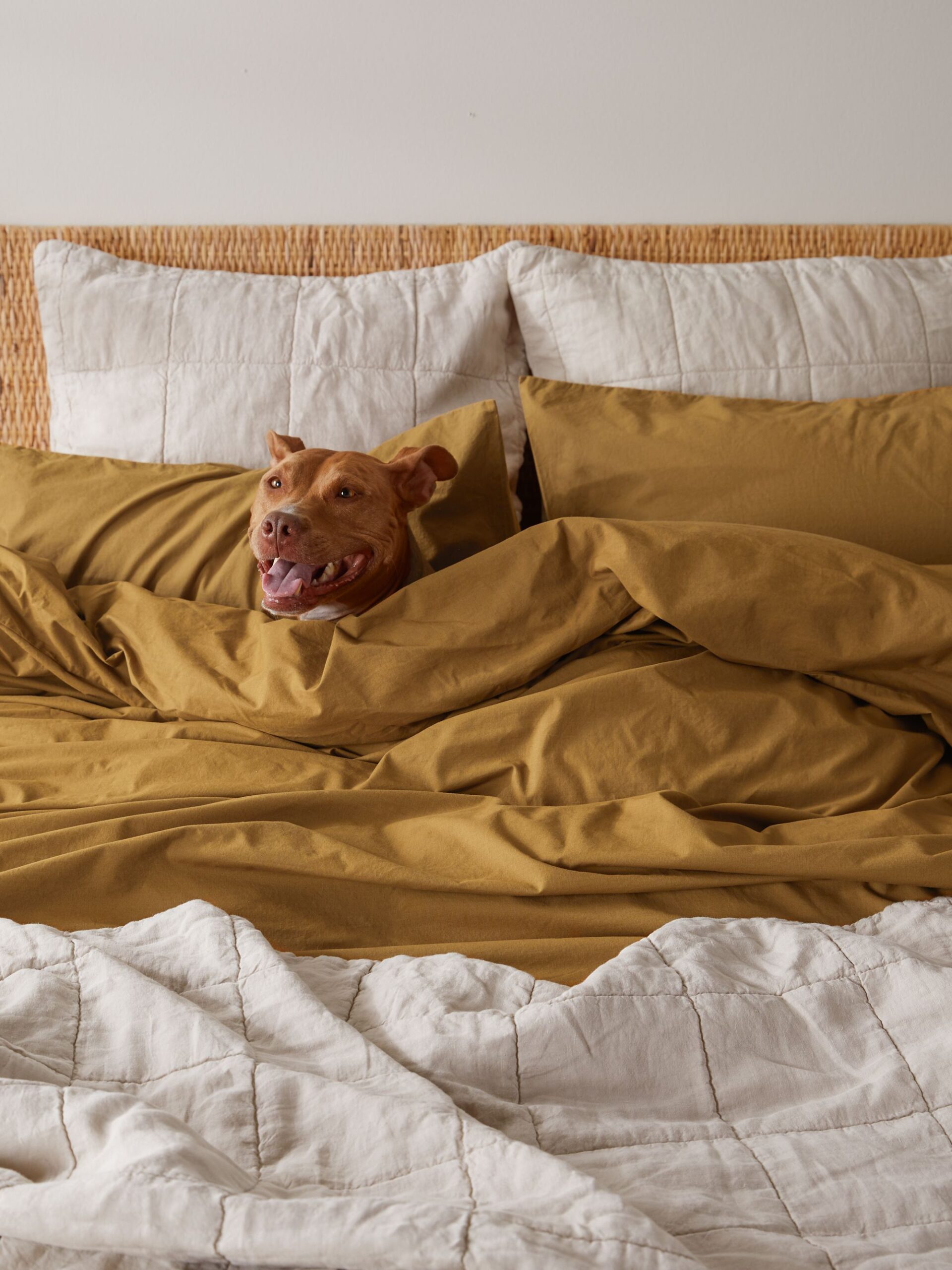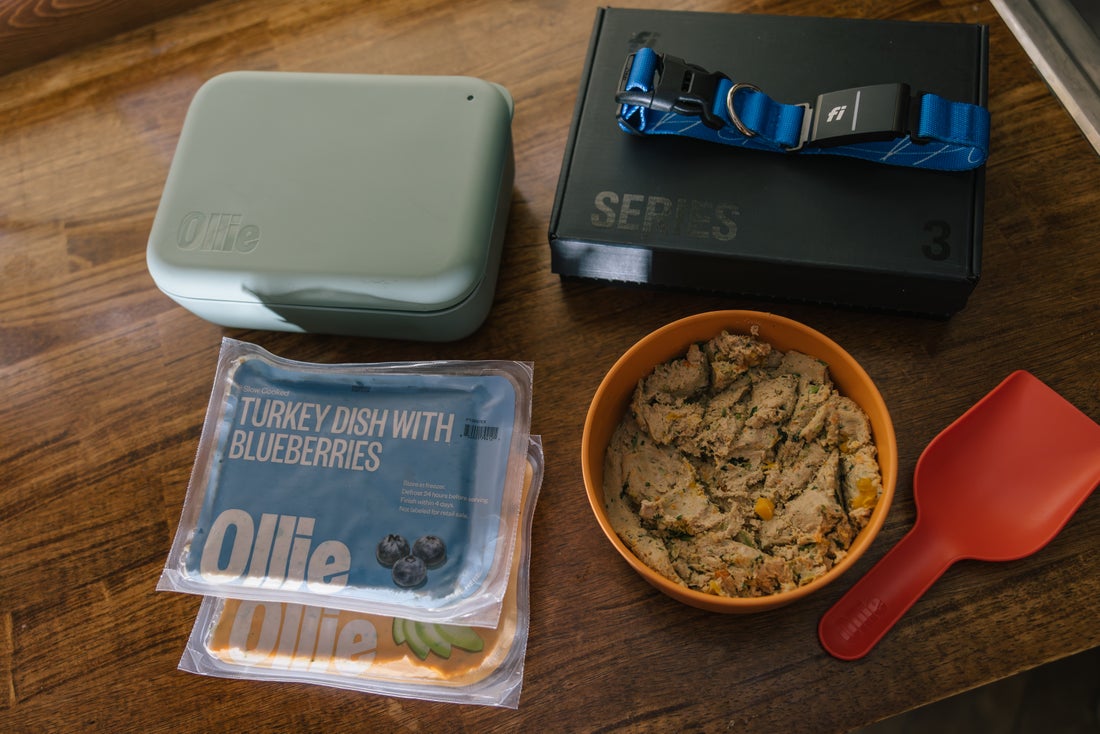Hey Ollie blog readers! We’re offering you an exclusive 60% OFF your starter box! Try now!
When it comes to taking care of yourself, good sleep is always at the top of the list. It’s the gift that keeps on giving. Good sleep shows up on your face, in your attitude, and best of all it shows up where you can’t see it: effectively healing our bodies from the inside out. But as an animal lover, are you doing yourself any favors by sharing your sleep space with your beloved furry companions? Are you doing them any favors, too? We decided to dig in a little deeper to help weigh the pros and cons of sleeping with our dogs.

Pro: Sleeping with your dog positively impacts your emotional well being
Simply being near your dog boosts the production of “happy hormones” like serotonin and dopamine, both of which can decrease loneliness, lower stress levels, and ease the effects of depression. Not to mention, sleeping with your dog promotes a sense of safety, security, coziness, and not just for humans—dogs also love to be next to their human companions and it reduces their anxiety to noise and reactions to weather or other external factors. Win-win.
Pro: Sleeping with your dog can promote a healthy heart
The American Heart Association has ample research on the health benefits of owning animals, and it turns out, we owe a lot of our longevity to dogs. We’re also more likely to recover from a heart-related setback with our dogs by our side and this study found that simply touching your dog or petting your dog reduces your blood pressure. Three cheers for spooning tonight!
Pro/Con: Sleeping with you dog can both help and hurt your sleep efficiency
This is where it gets a little tricky as sleep efficiency is all about personal sleep style. In the absence of a partner, those who sleep with their dog can actually see improved sleep efficiency because it increases the feelings of warmth, contentment, and relaxation. However, on the opposite end of the spectrum, having an extra (sometimes large and lanky body) in bed can actually cause friction in a human relationship—be it too many bodies in the bed or creating distance within the intimate relationship. Now, we’re only taking into consideration households with one pet. Households with more than one pet have drastically increased over the years. The more bodies in bed, the more chance for emotional and physical disruption.

Finding the sleep setup that works for you and your dog
If you and your pup have found the perfect human-to-dog bed ratio then read no further. But if you’re still figuring it out we recommend you take an honest look at how you’re sleeping and don’t hold back when answering if your current setup is really working for you, your partner, and your dog. The truth is, if your sleep is negatively impacted down the line it’s going to have repercussions. According to a study shared by The Bark, people who slept with dogs in their rooms, but not on their beds, reported 83% sleep efficiency — 80% is generally considered satisfactory. If keeping your companion nearby is simply enough for you then the next step is making him or her as cozy as possible. Like you, your dog typically prefers to sleep on a soft, cushy surface — our favorite: the dog bed from Parachute is just that (and bonus: it’s easy to wash)!
Whether in your bed nuzzled up next to each other or your pup having a bed of its own, you’re both healthier and happier simply being in the same room.
This post was written in partnership with Parachute, a modern lifestyle brand committed to making you feel at home. Browse their selection of thoughtfully designed and responsibly manufactured premium home goods online today.
Tagged As:

The nutrition your dog needs,
the food they want.

Enjoying our articles? Subscribe our Newsletters and get new articles directly to your inbox
You might also like
9 October 2025
4 MINS READ
How Fresh Food Can Help Soothe Your Dog’s Allergies
As a pup parent, watching your dog suffer from the constant discomfort of allergies is always distressing. The endless scratching, irritated skin, and digestive upset can take a toll on your pup�…
by Ollie Pets
18 September 2025
4 MINS READ
Is Fresh Dog Food Easier to Digest?
Yes, fresh dog food is generally easier for dogs to digest than highly processed kibble. Because it’s made with whole ingredients, gently cooked, and free from unnecessary fillers, fresh food supp…
by Ollie Pets
18 September 2025
5 MINS READ
Can I Rotate Fresh Dog Food Flavors?
Yes, it’s safe to rotate fresh dog food flavors, and many dogs actually benefit from the variety. At Ollie, we offer multiple fresh recipes, like Beef, Chicken, Turkey, Lamb, and Pork so you can…
by Ollie Pets







